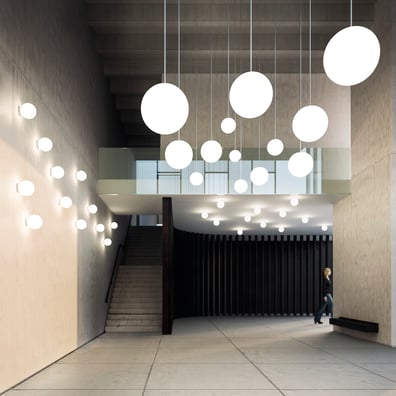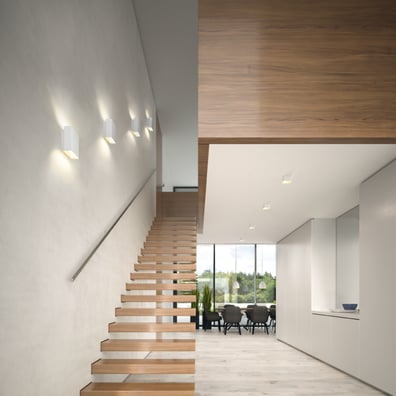Types of light

Unshielded light
Unshielded light is emitted by a light source and spreads unhindered in all directions. For human beings, unshielded light has its most pleasant effect when it is distributed softly in the room. Luminaires are therefore fitted with luminaire glass made of opal glass or light-refracting covers made of synthetic materials. The stronger the distributed light, the larger the area of the luminaire glass should be to avoid glare. Unshielded light is ideal for general illumination.
The arrangement of the luminaires in the picture shows how unshielded luminaires define the environment and make dimensions ascertainable.

Shielded light
Depending on the intended purpose, it may be advisable for luminaires to be shielded. Particularly with wall luminaires, for example in house entrances or in corridors where one would like to use soft light, it is considered to be more pleasant when some of the light is shielded. Shielded luminaires are characterised by their light graphics, which appear on the installation surface. They are suitable for placing light accents.

Directed light
This type of light is often used with luminaires which illuminate ground surfaces, even from a great height. Outdoors, this is the case with street and pathway luminaires, or the illumination of areas requiring increased attention – for example stairs. Every floodlight produces directed light. This can be effected from all positions – from a pole or from the ground. Directed light is frequently used in the field of functional illumination.